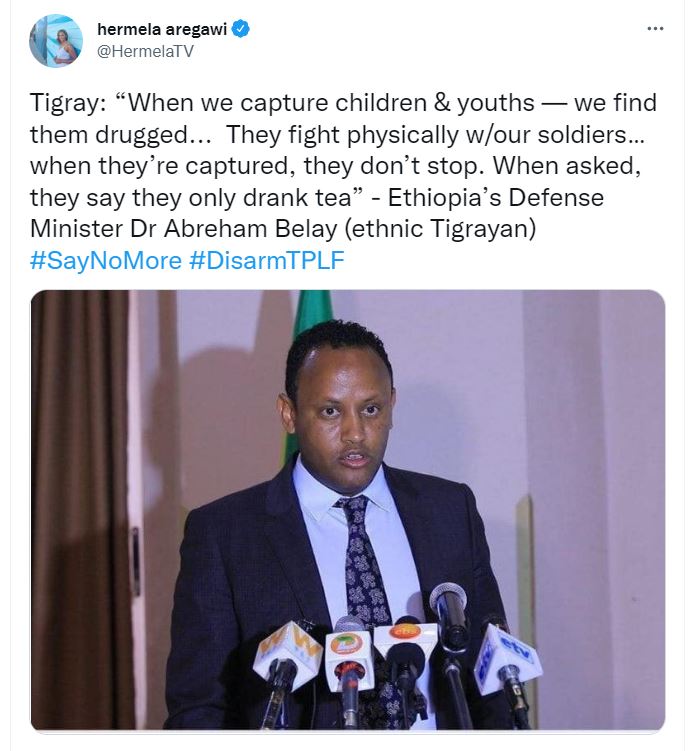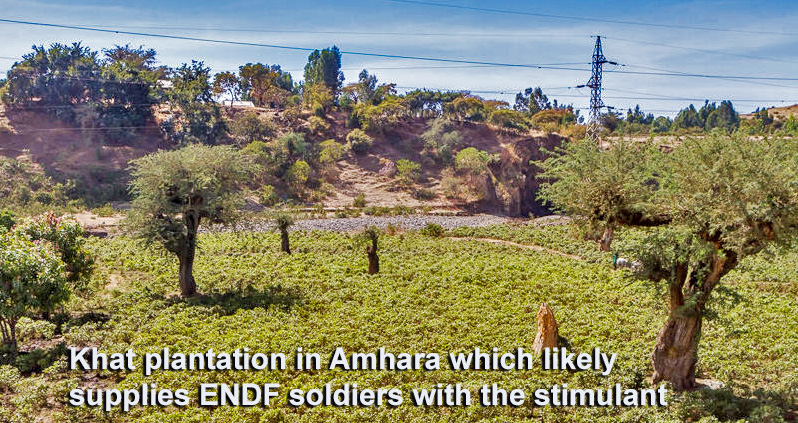
Examination of the claims by Ethiopian Defense Minister Abreham Belay that Tigray youth fighters captured were given drugs is a bizarre and hypocritical statement. He no doubt is aware that there is a potent stimulant, Khat, commonly used in the Amhara, Oromo, and southern areas of Ethiopia which is not common in Tigray. It seems he wants to claim the Tigray forces are just youths coming in undisciplined waves often defeating superior numbered Ethiopian forces which have “superior weaponry and training”. So he came up with the idea that the Tigray have magic drugs that turn this innocent youth into supermen. There is a great irony in that there is high if not certain likelihood that his own fighters which often include youth are likely using Khat to greater extent then the Tigray. Not only do the Tigray culturally not favor its use but the availability of Khat would be almost impossible. It does not grow in Tigray and is perishable within a short time. The Tigray siege would make it difficult to import in great quantities.

The second largest export of Ethiopia are leaves of the plant, Khat (Catha Edulis)which contains the amphetamine-like substances cathine, cathinone, and methcathinone. Traditionally it is chewed slowly for hours to increase alertness, improve the mood, and increase mental focus. Its use is very common throughout much of Africa and the Arab regions. Public health studies have shown its greatest use in the the Southern Nations, Nationalities, and Peoples’ Region, Oromia, and Amhara regions of Ethiopia.
When I lived in the Amhara region one could find a Khat vendor on almost every block of a town whereas in Tigray the cultural use of Khat has been much less accepting. Often times taxi drivers, security guards, young men college students, policemen, and soldiers in the regions mentioned in the areas above partake of Khat as documented in public health research. There is little research on its effects on physical activity although in Olympic competition it is banned as happened to a Kenyan boxer in 2004.
Although in these regions the popularity of Khat use is high little is known about any deleterious effects. Some clinicians involved in stroke care like myself have wondered whether it creates a greater risk of hemorrhagic stroke but to date no definitive evidence has been demonstrated.
Finally, Ethiopia has very poor resources for drug testing. I cannot believe that the Ethiopian Defense Forces is drawing blood, urine, and hair samples from its prisoners and sending them to foreign countries for testing which is what would be required.

